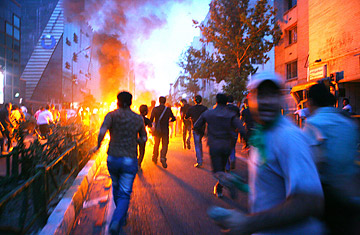
Iran, 2009
Mahmoud Ahmadinejad vs. Mir-Hossein Mousavi
Iranians expected trouble. As a heated campaign marked by scalding personal attacks and fierce debates over the sluggish economy wound down, opposition supporters warned of vote-rigging. But the June 12 election unleashed a level of chaos that nobody predicted. As polling closed, both candidates declared they had prevailed by wide margins. Within two hours, Iran's state-run news agency declared Ahmadinejad had been re-elected in a landslide — a result Iran's Supreme Leader, Ayatullah Ali Khamenei, hailed as a "divine victory."
But the Ayatullah's political clout didn't palliate the anger of Mousavi's supporters, who were sure the election had been snatched from their grasp. Over the ensuing week, millions of Iranians — old and young, wearing sneakers and chadors — massed in Tehran's squares, hoisting signs or portraits of Mousavi, torching buses and garbage cans, Twittering the turmoil, defying the government and demanding their votes be counted. Exact numbers could not be ascertained, but reports numbered the dead at more than a dozen. The demonstrations revealed cracks in Iran's theocracy — Khamenei, who possesses final authority over matters of state and faith, quickly backpedaled by ordering an investigation of the results — triggered a flurry of speculation, both domestically and abroad, over whether the rallies could rock the regime, and sparked a chess match between political factions vying for power. As Iran's government works to limit international coverage of the tumult, the world waits for Tehran's next move.